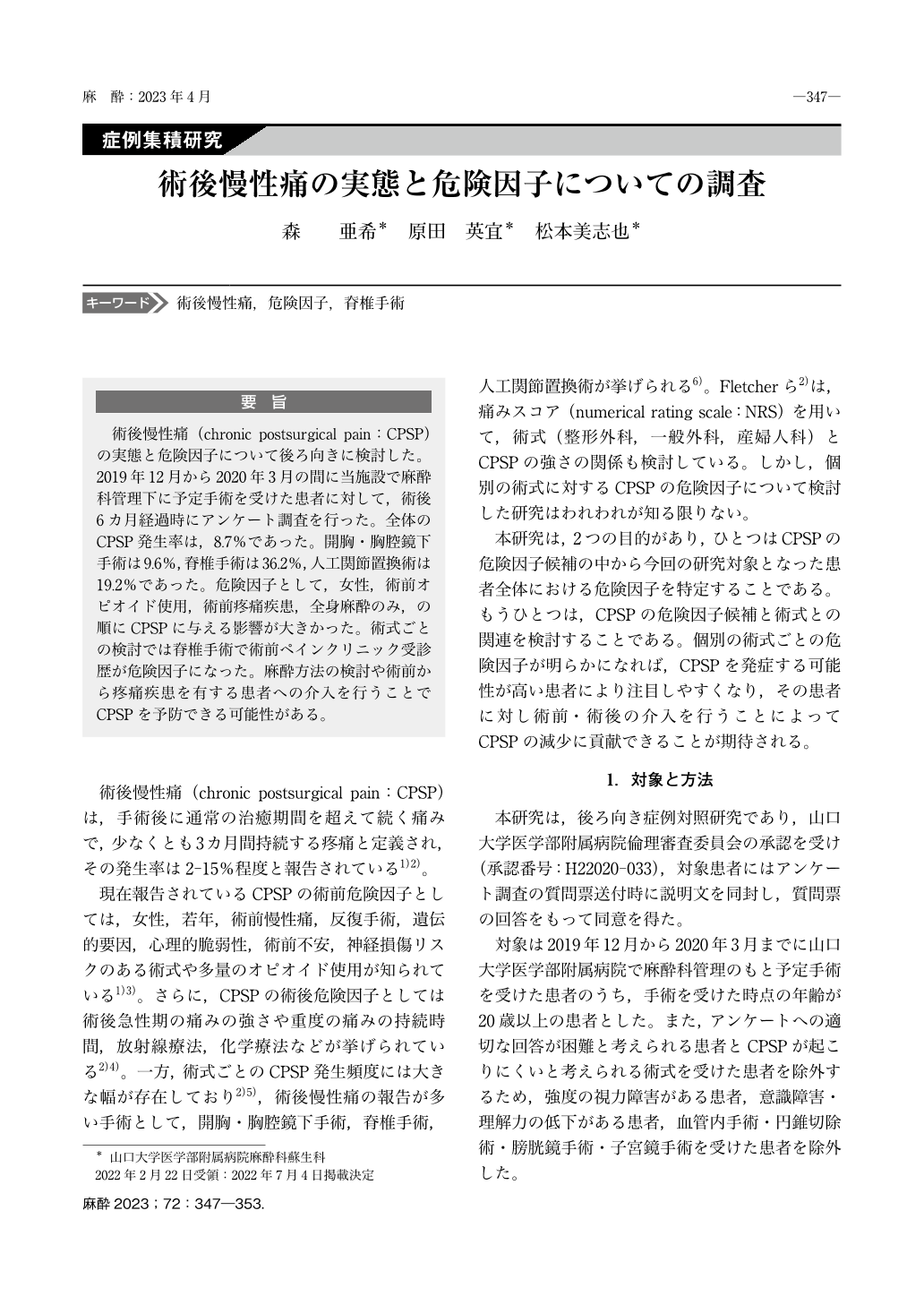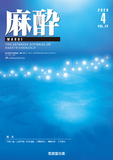Japanese
English
- 有料閲覧
- Abstract 文献概要
- 1ページ目 Look Inside
- 参考文献 Reference
要旨
術後慢性痛(chronic postsurgical pain:CPSP)の実態と危険因子について後ろ向きに検討した。2019年12月から2020年3月の間に当施設で麻酔科管理下に予定手術を受けた患者に対して,術後6カ月経過時にアンケート調査を行った。全体のCPSP発生率は,8.7%であった。開胸・胸腔鏡下手術は9.6%,脊椎手術は36.2%,人工関節置換術は19.2%であった。危険因子として,女性,術前オピオイド使用,術前疼痛疾患,全身麻酔のみ,の順にCPSPに与える影響が大きかった。術式ごとの検討では脊椎手術で術前ペインクリニック受診歴が危険因子になった。麻酔方法の検討や術前から疼痛疾患を有する患者への介入を行うことでCPSPを予防できる可能性がある。
Background:Chronic postsurgical pain(CPSP)remains a problem to overcome. Here we retrospectively investigated the actual condition and risk factors for CPSP.
Methods:A questionnaire survey was done at 6 months postoperatively to patients who underwent scheduled surgery under the management of the anesthesiology department at our facility between December 2019 and March 2020. The questionnaire included the EuroQol 5 Dimension 5 Level and Numerical Rating Scale(NRS). CPSP was defined as NRS 4 or higher.
Results:The overall incidence of CPSP was 8.7%(58/665). In detail, the incidence was 9.6% for thoracotomy and thoracoscopic surgery, 36.2% for spinal surgery, 19.2% for joint replacement surgery, and 5.6% for others. Identified risk factors for CPSP, in order of effect size, were female sex, preoperative opioid use, preoperative pain syndrome, and general anesthesia only. The history of clinical consultation for preoperative pain was also a risk factor for spinal surgery.
Conclusions:It might be possible to prevent chronic postsurgical pain by devising appropriate strategies for anesthesia methods and interventions for preoperative pain syndrome.

Copyright © 2023 KOKUSEIDO CO., LTD. All Rights Reserved.


